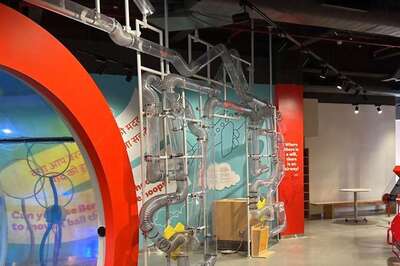
views
A vasectomy, also known as male sterilization, is a form of birth control. The procedure is a simple, non-invasive surgery in which the tubes (vas deferens) that carry sperm are blocked to prevent sperm from being released into the ejaculated fluid (semen). However, as with most forms of birth control, there is a lot of misinformation around vasectomies. Here, we bust some of the popular myths that you or those around you may have heard of.
Myth 1: A vasectomy is a painful procedure.
You may be surprised to know that a vasectomy hurts just as little as a pinch or prick. Before starting the procedure, the doctor injects local anesthesia or a numbing agent directly into the scrotum area. This makes the procedure practically painless. Pain-relieving medications are prescribed to prevent any post-procedure pain.
Myth 2: A vasectomy is irreversible.
Vasectomies are considered to be a permanent method of birth control and while the procedure to reverse a vasectomy may be more complicated, it isn?t impossible. According to the NHS, UK the chances of a successful reversal are higher (75%) when performed within three years and decrease from then on.
Myth 3: A vasectomy hampers erections, having an orgasm and sex drive.
This procedure blocks the vas deferens to prevent the sperm from travelling to the penis and this does not impact the penis or its functioning at all. Also, libido or sex drive is related to the amount of testosterone in your body and this procedure does not interfere with the secretion of the hormone either. A research study on the topic has reported no change in the ability to get an erection or have an orgasm.
Myth 4: Vasectomy recovery is long and difficult.
It is a simple and very quick procedure that takes place in a hospital facility. The person undergoing the procedure can return home the same day. Within 3-4 days, he can resume office/work. He can begin to perform sexual activities and normal exercise within a week and completely recovers within 15 days.
Myth 5: After a vasectomy, sperm accumulates in the body and causes the testes to explode.
Semen mostly contains body fluids such as mucus, enzymes, fructose, etc and a very small amount of sperm. After a vasectomy, the part of the semen that does not contain sperms will be ejaculated as per usual and the sperm that remains in the body dies and gets absorbed. This isn’t a new or strange occurrence as it also happens whenever a sperm cell is not released without a vasectomy. Furthermore, there will be no reduction in the amount of ejaculation.
Myth 6: Vasectomy can lead to prostate cancer.
Having a vasectomy does not increase the risk of or cause prostate cancer. Many researchers have conducted studies on the subject and found no evidence of an association between the two.
Myth 7: A vasectomy is an expensive procedure.
Family planning methods are provided free of cost by the Government of India per reproductive rights. So, sterilization is conducted free of cost at any government health care facility with functional operation theatres.
For more information, read our article on Vasectomy.
Health articles on News18 are written by myUpchar.com, India’s first and biggest resource for verified medical information. At myUpchar, researchers and journalists work with doctors to bring you information on all things health.
Read all the Latest News, Breaking News and Coronavirus News here




















Comments
0 comment